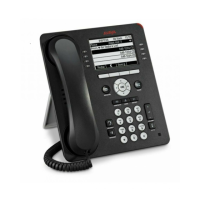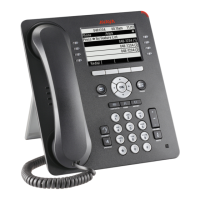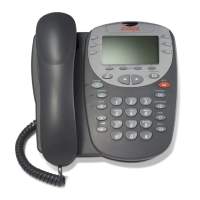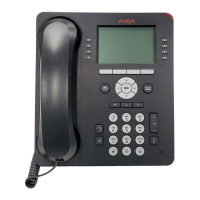Dynamic Addressing Process
Issue 1 May 2007 19
1. Plug one end of the H4DU 4-conductor coiled handset cord into the telephone and the other
end into the handset.
2. Plug one end of the first Category 5e modular line cord into the Ethernet jack of the PC and
the other end into the secondary Ethernet jack on the 9600 Series IP Telephone,
if appropriate.
3. If the telephone is to be IEEE-powered, plug one end of the second Category 5e modular
line cord into the Ethernet jack on the 9600 Series SIP IP Telephone. Plug the other end of
this cord into the Ethernet wall jack. If the telephone is to be IEEE-powered, you are
finished. Do not proceed to Step 4.
4. If the telephone is to be powered locally, connect one end of the second Category 5e
modular line cord into the Ethernet jack on the 9600 Series SIP IP Telephone. Plug the
other end of this cord into the 1151 power brick jack labeled Phone. Plug another Category
5e cable into the 1151 power brick jack labeled Line. Plug the other end of this cable into
the Ethernet wall jack. Finally, connect the 1151 to an AC power source. You are now
finished.
Dynamic Addressing Process
!
Important:
Important: Before starting this process, read Converting Software on 9600 Series IP
Telephones on page 12 to understand the requirements for converting factory-set
H.323 telephones to SIP. Also, ensure that both Avaya Communication Manager
(CM) and SIP Enablement Services (SES) are properly set up for your telephone
environment.
Note:
Note: Before starting this process you must have an OPTIM extension number for the
SIP IP telephone, the Avaya Communication Manager security code (password),
and a login and password on the SES server.
Any reference to the HTTP server applies equally to an HTTPS server.
The following description of the process of installing the SIP IP telephones assumes that the
process is executed successfully. Only an initial out of the box installation is described. For
errors that might be encountered during the process and the messages displayed, see
Chapter 5:
Troubleshooting Guidelines.

